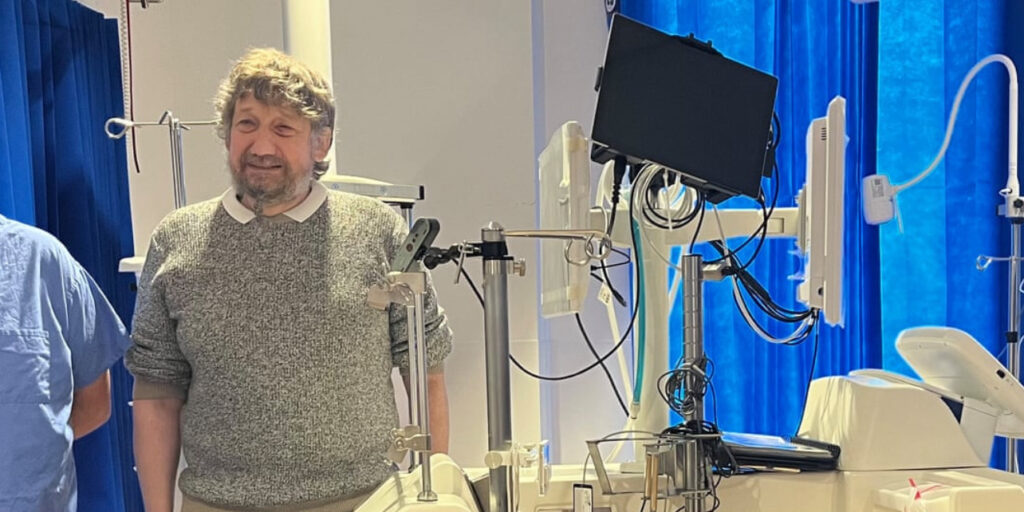Surgeons in the UK have successfully performed a double-lung transplant using an innovative machine that revives and sustains donor organs outside the body.
This marks the first time the groundbreaking technology has been deployed in the country.
The state-of-the-art device, resembling a bubble-like chamber, uses pumps and filters to repair, recondition, and revitalise donor lungs, ensuring they are fit for transplantation.
Known as the XPS system, this advancement allows surgeons to assess and rehabilitate lungs, extending their viability far beyond the traditional method of storing organs on ice, which risks tissue damage.
Experts believe the machine could revolutionise lung transplantation within the NHS, potentially saving hundreds of lives annually by increasing the availability of usable organs.
First UK Patient Transplant a Success
Daniel Evans-Smith, 49, an events manager from Northampton, was the first UK patient to benefit from this pioneering technology.
Evans-Smith had been living with chronic obstructive pulmonary disease (COPD), a debilitating condition causing severe breathing difficulties. Following the transplant at Royal Papworth Hospital in Cambridge, his life transformed overnight.
“It’s amazing. The difference is phenomenal,” Evans-Smith told The Guardian, reflecting on the procedure’s impact.
Traditionally, lungs are preserved by cooling them to near-freezing temperatures, which slows metabolic activity but limits the time available for transplantation.
Additionally, assessing the quality of lungs under such conditions is nearly impossible, leading to only 20% of donated lungs being utilised globally.
The XPS system, however, mimics the human body’s natural environment, allowing lungs to inflate, deflate, and function normally outside the body.
A specialised fluid helps maintain and even improve the organs, keeping them viable for up to six hours. After at least three hours of testing, lungs deemed suitable are prepared for transplant.
A New Era for UK Lung Transplants
The surgical team, led by consultant surgeons Marius Berman, Giuseppe Aresu, and Pradeep Kaul, utilised a technique called ex-vivo lung perfusion (EVLP).
While EVLP is widely used in Europe and the US, it has only seen limited use in the UK, primarily during clinical trials or with alternative machines.
The success of Evans-Smith’s operation has already paved the way for three more transplants using the XPS system at Royal Papworth Hospital.
Surgeons and healthcare experts are optimistic that this cutting-edge device will not only reduce the number of discarded donor lungs but also shorten waiting times for patients in critical need of transplants. Evans-Smith’s wait on the transplant list was just nine days.
Now home in Northampton and continuing his recovery, Evans-Smith serves as a testament to the life-changing potential of this medical breakthrough.


